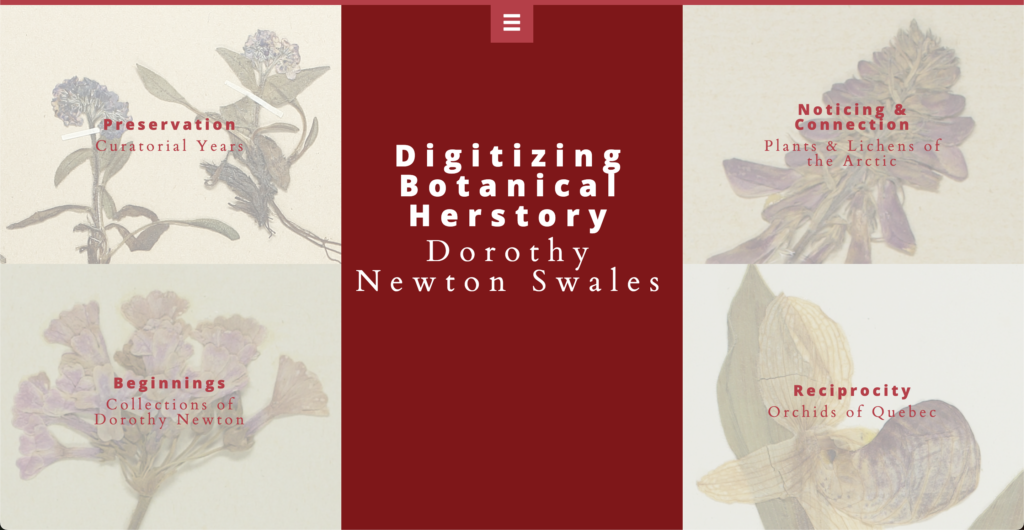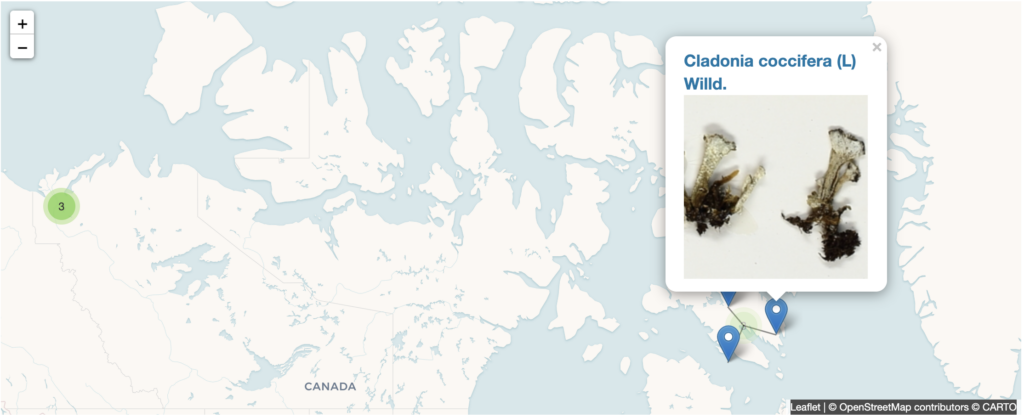Digitizing Botanical Herstory brings the botanical collections of Dr. Dorothy Newton Swales to life using the interactive, multimedia platform, Omeka. As you browse through the four collections, you get to learn not only about the different plants but also the life and fieldwork of the botanist herself through storytelling, images, mapping and archival data.

Who is Dr. Dorothy Newton Swales?
Dr. Dorothy Newton Swales was a female Canadian botanist and the first woman to curate the Macdonald College (now McGill University) Herbarium between 1964 and 1971. During her time at the herbarium, she specialized in curating collections plants from Arctic and sub-Arctic regions of Canada, Europe and Russia including samples from her own fieldwork in Iqaluit and Switzerland. Given botanical science’s history of devaluing the work of female botanists, this exploration of Dr. Swales’ work sheds light on contributions that have historically been marginalized.

Why We Think This Project is DEH
This project was created by our very own Heather Rogers as part of her Digital Humanities MA thesis and draws on the material eco-critical concept of storied matter to explore the Dr. Swales’ collection. Rather than simply being an online database for Dr. Swales’ collection, the project attempts to story the lives of the plants through a varied media, treating them as active co-authors in her professional journey. Heather created this project with the objective of contributing to the field of DEH by showcasing how digital tools can tell “nuanced, interwoven stories about human-plant entanglements”1.
Learn more about the of the plants and Dr. Swales’ by visiting the Digitizing Botanical Herstory site. You can also learn more about Omeka and its use in DEH by visiting our DEH tools page.